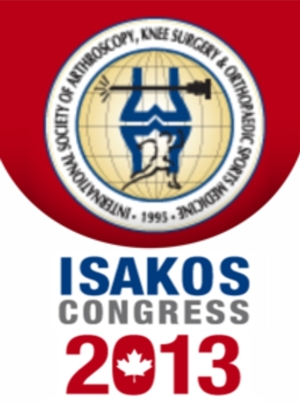
ISAKOS: Tunnel placement in SB ACLR closer to anatomical footprint with AMP approach

ISAKOS: Tunnel placement in SB ACLR closer to anatomical footprint with AMP approach
Prospective randomized comparison of transtibial and ateromedial portal techniques for graft and tunnel orientation in anatomic single-bundle ACL reconstruction
Did you know you're eligible to earn 0.5 CME credits for reading this report? Click Here
CONFERENCE ACE REPORTS
This ACE Report is a summary of a conference presentation or abstract. The information provided has limited the ability to provide an accurate assessment of the risk of bias or the overall quality. Please interpret the results with caution as trials may be in progress and select results may have been presented.
Synopsis
30 patients undergoing single-bundle anterior cruciate ligament (ACL) reconstruction with hamstring grafts were randomized to receive either the transtibial or anteromedial portal technique. The purpose was to determine the difference between the two techniques in bone tunnel placement, graft angle and bending of the graft angle at the tunnel aperture. Seven days following surgery, results indicat...
To view the full content, login to your account,
or start your 30-day FREE Trial today.
FREE TRIAL
LOGIN
Forgot Password?
Explore some of our unlocked ACE Reports below!

Learn about our AI Driven
High Impact Search Feature
Our AI driven High Impact metric calculates the impact an article will have by considering both the publishing journal and the content of the article itself. Built using the latest advances in natural language processing, OE High Impact predicts an article’s future number of citations better than impact factor alone.
Continue



 LOGIN
LOGIN

Join the Conversation
Please Login or Join to leave comments.